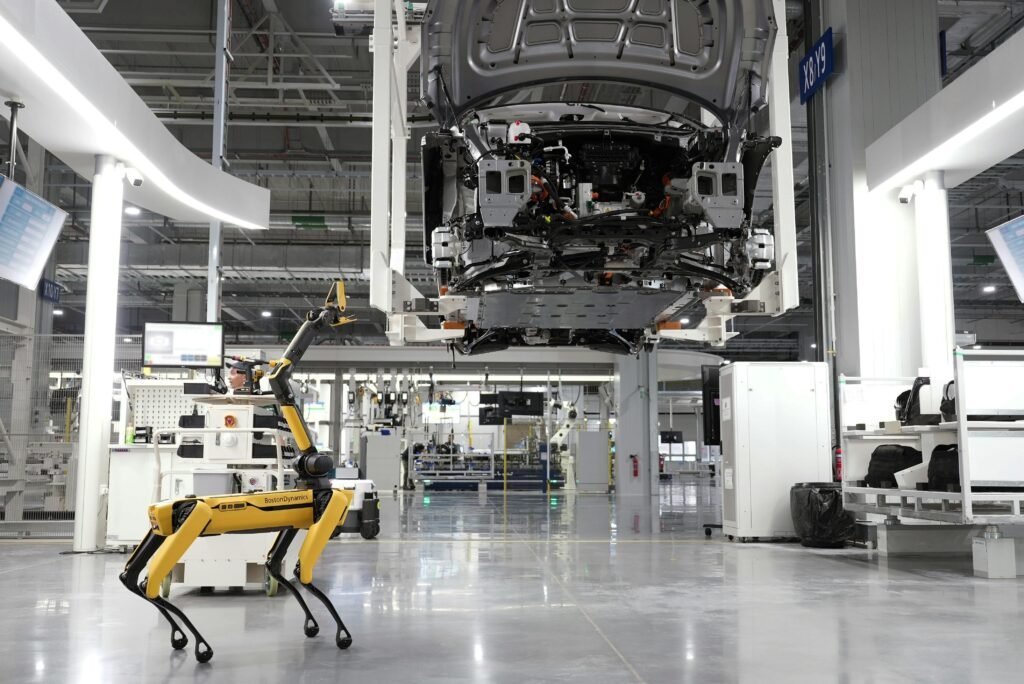Artificial Intelligence: From Its Origins to Modern Applications
Artificial Intelligence (AI) refers to the simulation of human intelligence in machines designed to think and learn like humans. It encompasses a wide array of technologies and methodologies aimed at creating machines capable of solving problems, processing data, recognizing patterns, and making decisions. AI has evolved over several decades, and its applications today span numerous industries and sectors, revolutionizing everything from business operations to creative processes.
The History of Artificial Intelligence
The concept of artificial intelligence can be traced back to ancient times, with myths and stories of artificial beings endowed with intelligence, such as Talos in Greek mythology. However, the modern field of AI as we know it emerged in the mid-20th century.
- Early Foundations (1940s – 1950s)
The groundwork for AI began in the 1940s with the advent of digital computers. During World War II, British mathematician Alan Turing laid the foundation for AI through his development of the “Turing machine” and his exploration of the concept of a “universal machine” capable of performing any computation. In 1950, Turing introduced the Turing Test, a method for determining whether a machine exhibits human-like intelligence. - The Birth of AI (1956)
The formal birth of AI as a scientific discipline occurred at the Dartmouth Conference in 1956. Computer scientists John McCarthy, Marvin Minsky, Claude Shannon, and Herbert Simon were among the key figures who proposed that “every aspect of learning or any other feature of intelligence can in principle be so precisely described that a machine can be made to simulate it.” McCarthy coined the term “Artificial Intelligence,” marking the start of serious AI research. - The AI Winters (1970s – 1990s)
Despite early optimism, progress in AI research encountered significant challenges. The 1970s and 1980s saw two major periods known as the AI Winters, characterized by reduced funding and interest in AI. The limitations of computational power, unrealistic expectations, and the complexity of problems being tackled led to slow progress. However, advancements in computing hardware, software, and algorithms eventually reignited the field. - The AI Resurgence (2000s – Present)
AI entered a new era of growth in the early 2000s, fueled by advancements in machine learning, neural networks, and the availability of massive datasets. The development of powerful hardware such as Graphics Processing Units (GPUs) and cloud computing enabled deep learning algorithms to process large amounts of data. AI also became a key driver of technologies such as autonomous systems, natural language processing, and computer vision.
Key Branches of Artificial Intelligence
AI is a broad field with several subfields contributing to its vast capabilities.
- Machine Learning (ML)
Machine Learning is a core subset of AI that involves teaching machines to learn patterns from data without explicit programming. ML algorithms improve their performance over time as they are exposed to more data. ML is used in recommendation systems, fraud detection, and predictive analytics. - Deep Learning
A subset of machine learning, deep learning uses artificial neural networks with multiple layers (hence the term “deep”) to process complex data. Deep learning has led to breakthroughs in image recognition, natural language processing, and autonomous vehicles. - Natural Language Processing (NLP)
NLP focuses on the interaction between machines and human language. It enables computers to understand, interpret, and generate human language. Examples of NLP applications include chatbots, virtual assistants like Siri and Alexa, and language translation services like Google Translate. - Computer Vision
This branch of AI deals with enabling machines to interpret and understand visual information from the world. Computer vision algorithms can recognize and analyze images and videos, enabling applications like facial recognition, medical imaging, and autonomous driving. - Robotics
AI and robotics are intertwined in creating intelligent machines capable of performing physical tasks. Robotic systems are used in manufacturing, healthcare (e.g., robotic surgery), and autonomous delivery systems.
Generative AI: Creating New Content
One of the most exciting advancements in AI is generative AI, a subset of AI that focuses on generating new content, such as text, images, and music, using algorithms. The key aspect of generative AI is that it doesn’t just analyze existing data but can produce novel outputs based on learned patterns.
- Generative Adversarial Networks (GANs)
GANs, introduced by Ian Goodfellow in 2014, are a class of algorithms that use two neural networks to generate new, synthetic data. One network, called the generator, creates data, while the other, the discriminator, tries to distinguish between real and generated data. GANs are widely used for generating realistic images, video content, and even deepfake technology. - Natural Language Generation (NLG)
In recent years, advancements in NLG have led to powerful language models like OpenAI’s GPT (Generative Pre-trained Transformer) and Google’s Gemini. These models can generate human-like text, write essays, create dialogue, and even assist in code generation. GPT models, such as GPT-4, can generate coherent and contextually relevant text for various applications, including customer support chatbots, creative writing, and automated reporting. - Creative AI
AI is being increasingly used to create art, music, and video content. Tools like DALL·E and MidJourney use deep learning to generate images from textual descriptions. Similarly, AI can compose music, write poetry, and even design logos or virtual environments for video games.
Applications of AI Across Industries

AI has penetrated almost every sector, transforming traditional processes and enabling new possibilities:
- Healthcare
In healthcare, AI is revolutionizing diagnostics, personalized medicine, and drug discovery. AI-powered imaging tools can analyze medical scans with high accuracy, detecting conditions like cancer or heart disease. Moreover, AI-driven virtual health assistants help monitor patients’ health in real-time. - Finance
AI plays a pivotal role in algorithmic trading, fraud detection, and customer service in the finance sector. Chatbots handle customer queries, while AI-driven analytics predict market trends and help in portfolio management. - Manufacturing and Logistics
AI-driven automation and robotics have improved efficiency in manufacturing by optimizing production lines, predicting equipment failures, and enhancing supply chain management. AI also powers autonomous delivery systems, such as drones and self-driving trucks. - Retail and E-Commerce
AI personalizes shopping experiences by recommending products based on customer preferences. In addition, AI-powered chatbots handle customer queries, and AI algorithms optimize pricing and inventory management. - Entertainment and Media
Streaming services like Netflix and Spotify use AI to recommend content based on user behaviour. Generative AI is used in video games to create realistic environments, characters, and scenarios. AI also powers virtual influencers and digital actors, creating new forms of storytelling. - Education
AI-driven learning platforms offer personalized learning experiences tailored to individual needs. From language learning apps like Duolingo to AI tutors, these systems can assess a learner’s strengths and weaknesses, providing targeted learning resources.
The Future of AI
AI is still in its infancy, with endless possibilities on the horizon. As AI continues to evolve, ethical considerations such as data privacy, bias in algorithms, and the potential impact on employment need to be addressed. The development of Artificial General Intelligence (AGI)—an AI system with the capacity to perform any intellectual task that a human can do—is a major goal but remains a challenge.
In the coming years, we can expect AI to become even more integrated into daily life, driving innovations in quantum computing, space exploration, and human-computer interactions. AI will continue to push the boundaries of what is possible, redefining industries and human potential in ways we are only beginning to understand.
Conclusion
From its theoretical roots to its current applications, artificial intelligence has come a long way. What was once a distant dream is now transforming industries and reshaping our world. With the rise of generative AI and deep learning, AI’s capabilities continue to grow, offering exciting possibilities for the future. As we advance, the challenge will be harnessing AI’s power responsibly to benefit society as a whole.
Read more about Artificial Intelligence (AI)
Personal Development is key: browse the courses we offer



(1) Comment